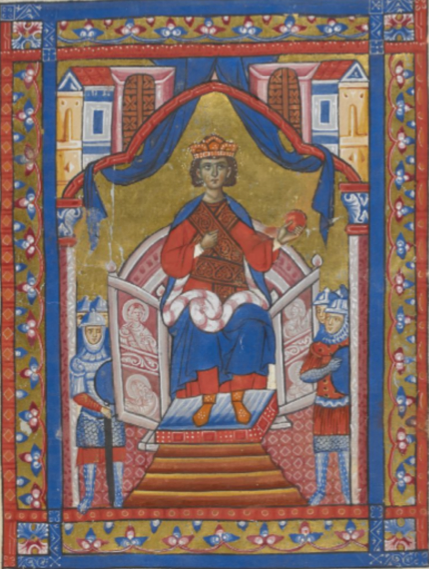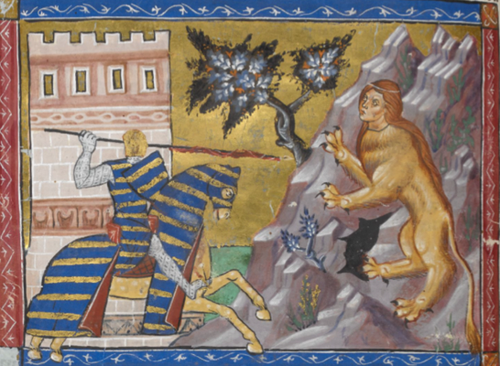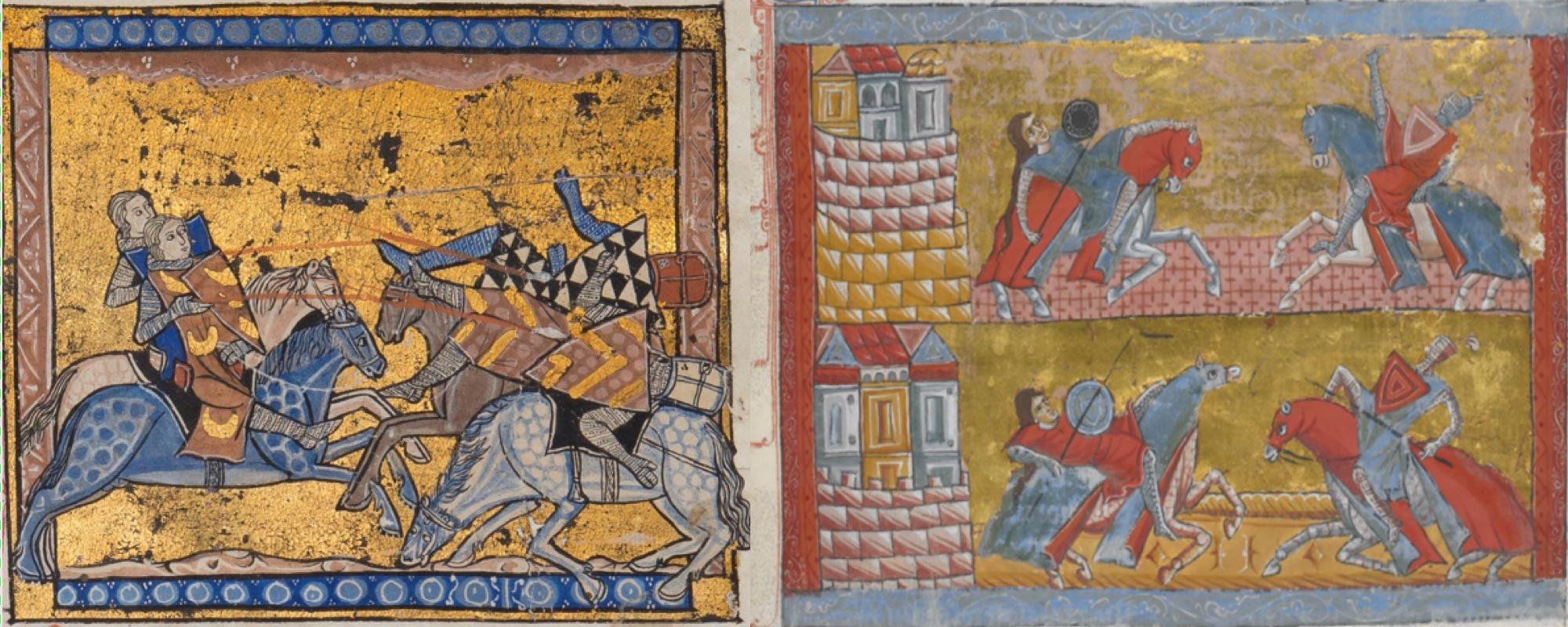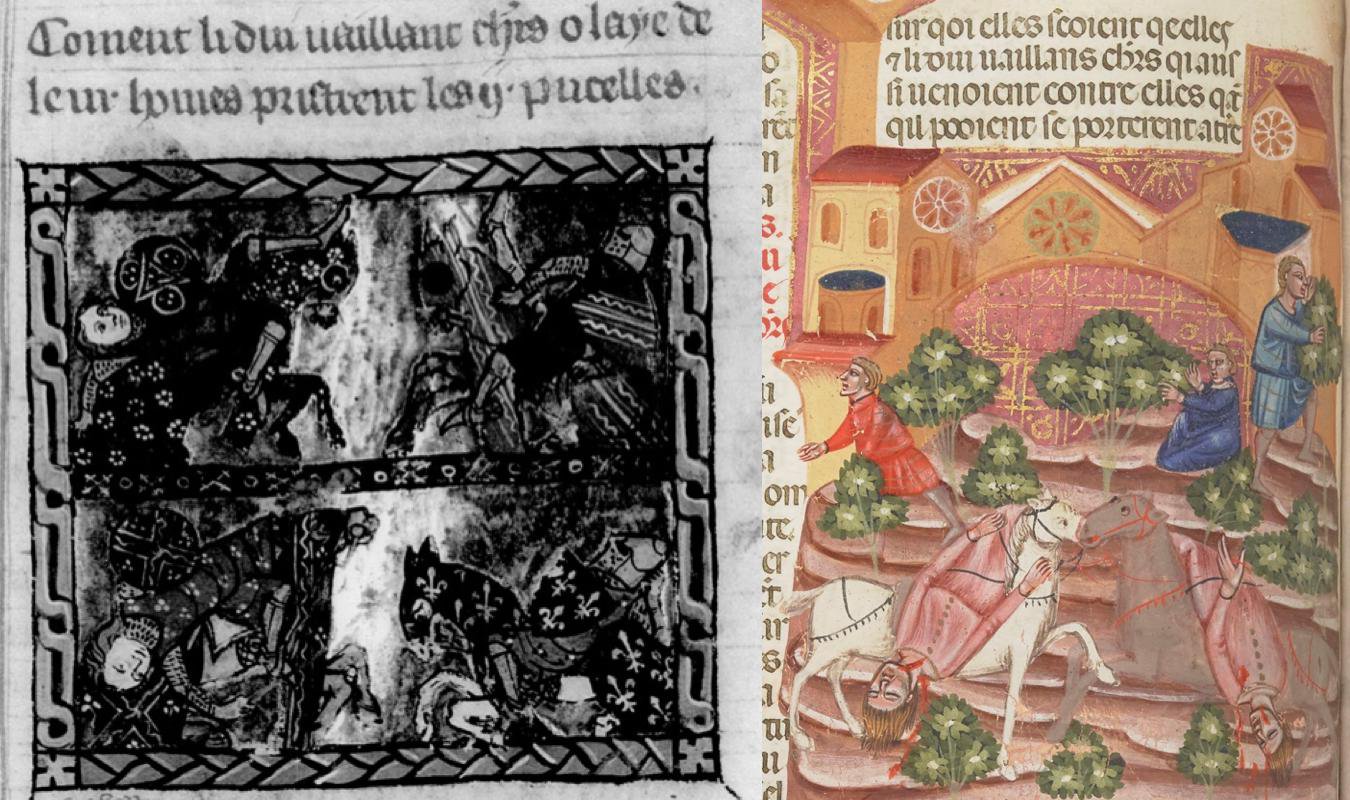Political Manuscripts
Johannes Junge Ruhland is a doctoral student in French at Stanford University. His research explores interpretive modes medieval and modern in manuscripts in Old French and Old Occitan, with a focus on the modern category of ‘fiction’.
While an MA student at King’s, I wrote a dissertation on one of the four Acre manuscripts of the Histoire ancienne, British Library, Additional 15268, investigating the question of historical truth. My enquiry was governed by two premises. First, if history ‘seems true’ to anyone, it always does so to someone; this meant I had to focus on Additional 15268 as a manuscript, not just as an instance of the Histoire ancienne. Borrowing and adapting Brian Stock’s concept, I wanted to gain insight into the manuscript community of Additional 15268. Second, that history might seem true to some also implied it might not have seemed true to others. Consequently, the ‘poetics of truth’ I set out to study is deeply political not only on the page—as it was ‘intended’—, but also in its effects among members of the audience. I offer here a brief discussion of how we can understand Additional 15268 as a political manuscript in this more fundamental sense of the term.
In Les Manuscrits enluminés de l’Histoire ancienne jusqu’à César en Terre sainte. Saint-Jean-d’Acre, 1260-1291, Émilie Maraszak discusses the agenda behind the motifs and the style—‘Crusader style’—of the Acre manuscripts (Brussels, BR, 10175; Dijon, BM, 562; London, BL, Add. 15268; although Maraszak follows Oltrogge in rejecting its Outremer origin, due to its iconographic style Paris, BnF, fr. 20125 should be added to the list: see Rodríguez Porto, Beyond the Two Doors, 62n29). She discerns the aim to offer a ‘syncretic’ vision of Outremer communities, and shows how this might have played out in the years before 1291. Thus, she analyses how the depiction of king Ninus displays culturally disparate symbols of royalty, and argues that this illumination was meant to provide the audience with an image of ideal sovereignty that blended Byzantine, Arab, and Latin components (see Maria Teresa Rachetta’s blog post on Ninus).

King Ninus enthroned. British Library, Add. 15268, f. 16r. Reproduced with permission from the British Library Board.
Maraszak suggests that the Acre manuscripts used the narrative materials of the Histoire ancienne to convey a ‘political’ message that addressed current-day issues among Acre elites. Yet in making this claim, Maraszak implies that a ‘political’ message is something that can be tagged onto a ‘text’ whose identity is stable from manuscript to manuscript: in other words, Maraszak suggests that politics is here a matter of resignifying the Histoire ancienne by visual means. This left me wondering about how Maraszak understood the politics of the Acre manuscripts to work. Indeed, her discussion deals with how and why these manuscripts came to be, but does not examine what responses these manuscripts may have elicited from their audience. In other words, Maraszak locates politics with the manuscripts’ creators. But how do the manuscripts’ politics play out when they are read?
Maraszak herself is very much aware that the agenda of the Acre manuscripts may not have corresponded to Outremer daily life, but that it might have been a wishful vision of Outremer social configurations instead. Beyond questions of reference this also implies that the political agenda of these manuscripts may not have appealed to everyone, because the audience did not necessarily identify as a collective ‘we’ (a manuscript community) that it recognised in the agenda of the manuscript. To reemploy the example of king Ninus, he would only be identified as an ideal sovereign if syncretic rulership was deemed acceptable in the first place; only then would Additional 15268’s audience—or parts of it—recognise king Ninus as an ideal fit to serve Outremer realities.

Oedipus fights the Sphinx. British Library, Add. 15268, f. 77v. Reproduced with permission from the British Library Board.
Manuscript and audience therefore mutually define each other. On one side, the audience of Additional 15268 constitutes the paradigm that the manuscript will follow; on the other side, the manuscript lays claim to identities and to truths that the audience must assess, and adopt or reject. A case in point is the process of analogy (read more in Henry Ravenhall’s blog post on that topic). Alien terms like ‘toga’ are made understandable, but their specificity is still preserved. In the same vein, Ninus is depicted in thirteenth-century royal attire, but the elements that make up his dress come from different cultural traditions. The sum of the parts does not correspond to something that exists. The same goes for monstrous beings such as the Sphinx: the text, accompanied by a miniature, tells us it is part lion, part human, but still something else than lion or human, namely, a Sphinx:
Cors auoit de lyon. et pies et ongles. et des espaules en amont auoit col et uisage de damoiselle molt cruel et espoentable…Spins lapeloient cil de la contree. (Add. 15268, 77vb)
[The monster] had the body of a lion, and [a lion’s] feet and claws. And from its shoulders up it had the neck and the face of a very fierce and fearsome lady…The dwellers of the country called it Sphinx.
If analogy were a mere flattening out of difference (as Oedipus’ knightly attire could lead us to believe), one would have learnt little from reading the Histoire ancienne. The process of ‘adaptation’ through analogy conveys knowledge about something unknown. Analogy is thus exposed to the scrutiny of an audience that does not (yet) correspond to the audience analogy targets, and that audience may accept, reject or partially reject its interpellation.
According to this line of thought, what is political about Additional 15268 is not just a ‘message’, a ‘significance’ that is added onto the Histoire ancienne; it is the fact that collective identities are being negotiated through, by, and around the manuscript. If we move beyond restrictive understandings of ‘politics’ and view politics as the perception of the social body as divided into groups, we can get a glimpse of the depth at which manuscripts might play a political role. In proposing models of ‘manuscript communities’, manuscripts engage with the audience that gathers around them, and are, in their constitutive role, political agents.
While much of what can be said about disagreement could appear speculative to some, manuscript variance can provide compelling examples of people strongly reacting against a manuscript’s politics. Although much work remains to be done (especially on the exact relations between the manuscripts of the Histoire ancienne), I would like to finish with an example provided by Ann Derbes and Mark Sandona, who examined the depiction of the Amazons in a dozen manuscripts. They noted significant differences in the quantity and weight given to these illustrations, and hence in ideological stance toward these female warriors (see Hannah Morcos’ blog post on attitudes towards the Amazons here). Tellingly, Paris, BnF, fr. 9682, a Parisian manuscript copied from an Acre manuscript, reinterprets the battle scene between the sisters of Antiope and Hercules and Theseus to the disadvantage of the Amazons. Compare how Additional 15268 and fr. 20125 differ from fr. 9682:

Left – BnF fr. 20125, f. 121r. Source: Gallica.bnf.fr. Right – BL, Add. 15268, f. 103r. Reproduced with the permission of the British Library board.
Fr. 9682 is much more ambiguous about the success of the female warriors, who, the rubric tells us, are about to lose anyway. Paris, BnF, fr. 686 (made in Italy) also provides a particularly gruesome depiction of the Amazons’ fate:

Left – BnF fr. 9682, f. 107r. Source: Gallica.bnf.fr. Right – Paris, BnF, fr. 686, 136v. Source: Gallica.bnf.fr.
How should we understand these examples of variance? Do they reflect different attitudes towards women? Do they display a visceral misogyny, or some form of manly unease at the thought of women warriors? If we relate these depictions to those found in the Acre manuscripts, we can understand them as dissenting views about the Acre manuscripts’ politics: that is, they may show us how people engaged with political manuscripts in debating who belongs where in the collective space. Manuscripts are political not in the definitive answers they provide, but in the agendas they present for discussion.
Works cited
Derbes, Ann, and Mark Sandona. ‘Amazons and Crusaders: The Histoire universelle in Flanders and the Holy Land’. In France and the Holy Land. Frankish Culture and the End of the Crusades, edited by Daniel H. Weiss and Lisa Mahoney, 187-229. Baltimore and London: the Johns Hopkins University Press, 2004.
Maraszak, Émilie. Les Manuscrits enluminés de l’Histoire ancienne jusqu’à César en Terre sainte. Saint-Jean-d’Acre, 1260-1291. Dijon: Éditions universitaires de Dijon, 2015.
Oltrogge, Doris. Die Illustrationszyklen zur ‘Histoire ancienne jusqu’à César’ (1250-1400). Frankfurt am Main: Peter Lang, 1989.
Rodríguez Porto, Rosa M. ‘Beyond the Two Doors of Memory. Intertextualities and Intervisualities in Thirteenth-century Illuminated Manuscripts of the Roman de Troie and the Histoire Ancienne’. In Memory and Commemoration in Medieval Culture, edited by Elma Brenner, Meredith Cohen and Mary Franklin-Brown, 55-76. Farnham, UK, Burlington, VT: Ashgate, 2013.
Stock, Brian. The Implications of Literacy. Written Language and Models of Interpretation in the Eleventh and Twelfth Centuries. Princeton: Princeton University Press, 1983.